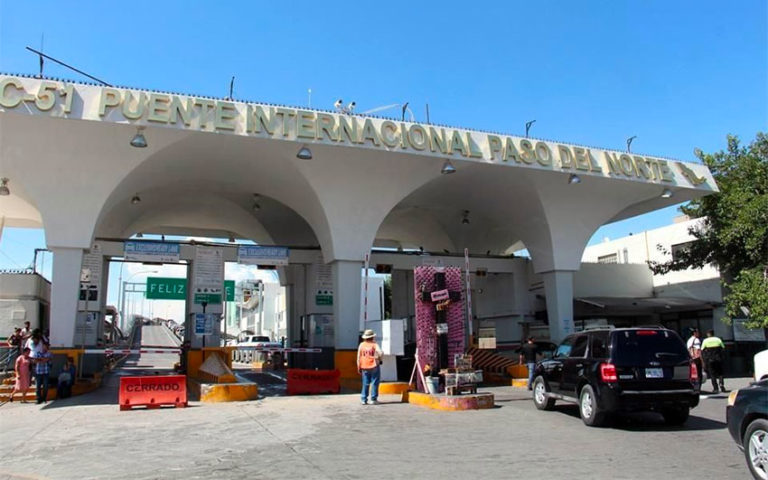Many will be waiting there for a year or more
by Mexico News Daily
About 6,000 migrants are stranded in the border city of Ciudad Juárez while waiting to apply for political asylum in the United States.
Chihuahua’s State Population Council (Coespo), which heads the coordination of migrant services in the city, stated that the current wait time to apply for asylum is about 90 days.
The migrant population in Juárez includes people from Cuba, Central America, Mexico, and even Africa.
As of August 13, 5,981 people were on the waiting list administered by Coespo. From this list, migrants are called by the U.S. Customs and Border Patrol (CBP) to cross into El Paso, Texas, and apply for asylum with an officer.
Once they have applied, migrants are held for a short time in El Paso before being returned to Ciudad Juárez, where they must wait for their cases to be heard. Wait times can be as long as a year in some cases.
Dirvin García, head of Mexico’s Center for Comprehensive Migrant Services (CAIM), stated that there are already cases with wait times that extend well into 2020.
Since October 27, 2018, 18,166 people have been put on the list to apply for asylum, of which 12,185 have been allowed to cross into the U.S. to make the application.
Of the 67 people who arrived at the CAIM facilities on August 10, one was from Cuba.
“It’s a long time to wait,” he said, “and we’re running out of money.”
He said he had relatives in the United States that were helping him financially, but the wait still wasn’t easy.
“Hopefully they can speed up the process so we can cross,” he added.
Instead of waiting, many migrants opt for crossing the Rio Grande to speed up the process. Once in the United States, they are arrested by the Border Patrol. At that point they can apply for asylum.
On Monday, the Border Patrol began holding interviews with migrants after a 10-day moratorium during which no one on CAIM’s list was called to cross into El Paso.
A similar situation occurred at the end of July, when interviews were suspended for 11 days due to overcrowding at CBP facilities.
Source: Reforma (sp)
9 states sign on to Oaxaca Pact, seek to narrow gap between north and south
The agreement will encourage growth in the industrial sector, business and tourism
The governors of nine states signed an agreement yesterday that seeks to boost development in the south and southeast of Mexico and to narrow the economic gap with the north of the country.
At a meeting in Oaxaca convened by the Confederation of Industrial Chambers, the governors of Oaxaca, Yucatán, Tabasco, Quintana Roo, Campeche, Chiapas, Guerrero, Veracruz and Puebla inked the so-called Oaxaca Pact.
Under the terms of the agreement, the governments of the southern and southeastern states will work collaboratively with the private and academic sectors to create a more prosperous region.
Oaxaca Governor Alejandro Murat expressed confidence that the pact will help to reactivate the regional economy and contribute to the achievement of equitable development across the nation.
Growth will be sought in the industrial sector, business and tourism, he said, adding that the agreement also stipulates cooperation on education, security and infrastructure.
The federal government is pursuing three large infrastructure projects in the south and southeast – the Maya Train, the Dos Bocas oil refinery and the Isthmus of Tehuantepec trade corridor, which includes modernization of the railway between Salina Cruz, Oaxaca, and Coatzacoalcos, Veracruz.
President López Obrador has said that the projects will act as a trigger for economic and social development.
Mexico’s southern states lag behind the north and center of the country in terms of human development.
A report published by the United Nations in May said that development in certain highly disadvantaged municipalities in Guerrero, Oaxaca, Chiapas and Veracruz is on a par with that in impoverished African countries such as Burundi and Burkina Faso.
As a result of a lack of economic opportunities, the southern-southeastern region has struggled to retain its population because many residents choose to seek employment in other parts of the country or the United States. The region also finds it difficult to attract new residents.
The governors agreed that development in their states has not kept pace with other parts of the country, which has exacerbated the north-south divide. They pointed out that the south and southeast has failed to attract much foreign investment and to tap in to export markets a significant way.
Seven out of 10 workers are employed in the informal sector of the economy and 80% of indigenous residents live in poverty, the governors said.
Some residents of the region are not all that keen about the development plans.
The Zapatista Army of National Liberation (EZLN) announced this week that it is planning to hold a music festival to protest against the government’s infrastructure projects.
In a rambling statement, Subcomandante Galeano (formerly Subcomandante Marcos) said the Zapatistas will also demonstrate against the “wall that the supreme government is planning to build on the Isthmus of Tehuantepec to separate us from the people of the north.”
It is unclear exactly what the EZLN member was referring to although some people have likened the deployment of National Guard troops to southern Mexico to ramp up enforcement against undocumented migrants to the construction of a wall.
The EZLN and López Obrador have a strained history although the president expressed his respect for the Zapatistas during a visit to Chiapas last month.
Source: El Universal (sp), La Neta Noticias (sp)



